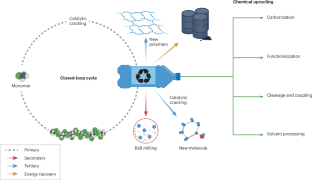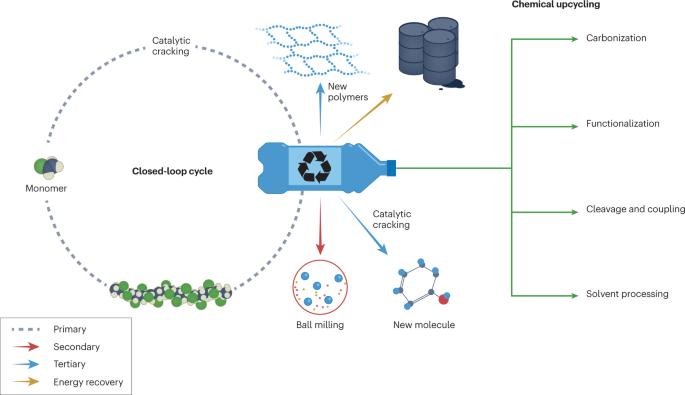Upcycling chlorinated waste plastics
IF 56
Q1 MULTIDISCIPLINARY SCIENCES
引用次数: 5
Abstract
Over the past decade, chlorinated plastics have been widely used as an indispensable thermoplastic owing to their low cost, durability, wide processing adaptability and good overall performance in plenty of end-use applications. One effective pathway to reduce plastic white pollution is to upcycle chlorinated plastics for added value and versatility rather than recycle them. This Primer focuses on upcycling technologies for converting chlorinated waste plastics into additional valuable products and endowing them with added versatility. We describe several upcycling strategies for the conversion of chlorinated waste plastics into value-added products, which involve pretreatment to reduce the chlorine content; pyrolysis, carbonization or catalytic cracking; or chemical modifications such as substitution with functional groups and plasticizers, and grafting with other polymers. Additionally, solvent-based processing is discussed, including solvent extraction, and dissolution, gel casting and solvothermal treatments are also included. This Primer aims to stimulate both research and industry to produce high-quality and high-value chemicals from upcycled chlorinated plastics that are suitable for value-added manufacture to provide the necessary environmental and economic push in the context of carbon neutrality and sustainable development. The upcycling of chlorinated plastics into value-added products is an effective method to reduce plastic pollution. In this Primer, Xu et al. describe upcycling strategies for the conversion of chlorinated waste plastics into value-added products and potential applications for these upcycled plastics.


回收氯化废塑料
在过去十年中,氯化塑料因其低成本、耐用性、广泛的加工适应性和良好的综合性能,在大量终端应用中被广泛用作不可或缺的热塑性塑料。减少塑料白色污染的一个有效途径是对氯化塑料进行升级再循环,以实现其附加值和多功能性,而不是对其进行回收利用。本《入门指南》重点介绍将氯化废塑料转化为更有价值的产品并赋予其更多功能的升级再造技术。我们介绍了几种将氯化废塑料转化为高附加值产品的升级再循环策略,包括预处理以降低氯含量;热解、碳化或催化裂化;或化学改性,如用功能基团和增塑剂替代,以及与其他聚合物接枝。此外,还讨论了基于溶剂的处理方法,包括溶剂萃取,以及溶解、凝胶浇铸和溶热处理。本入门旨在激励研究人员和工业界利用适合增值制造的升级再循环氯化塑料生产高质量、高价值的化学品,从而在碳中和与可持续发展的背景下提供必要的环境和经济推动力。将氯化塑料升级再造为高附加值产品是减少塑料污染的有效方法。在本《入门指南》中,Xu 等人介绍了将氯化废塑料转化为增值产品的升级再循环战略,以及这些升级再循环塑料的潜在应用。
本文章由计算机程序翻译,如有差异,请以英文原文为准。
求助全文
约1分钟内获得全文
求助全文

 求助内容:
求助内容: 应助结果提醒方式:
应助结果提醒方式:


